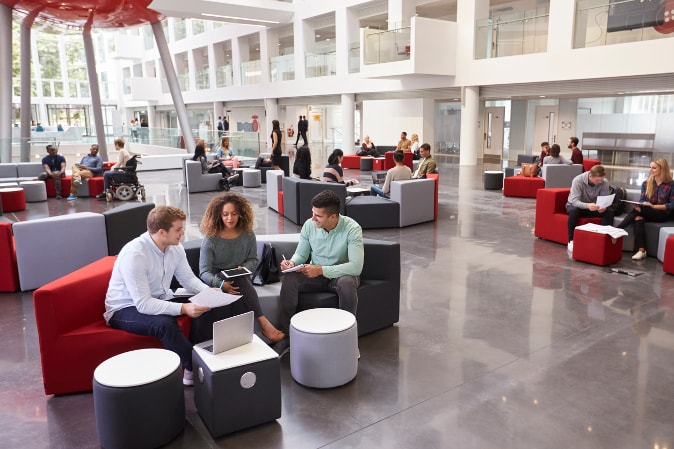
How digital is increasingly influencing office design
How Digital is Increasingly Influencing Office Design
Technology is rapidly changing most aspects of our lives – and office design is no exception. Increasingly, companies are harnessing the power of technology to create better working environments, boost productivity and improve staff retention.
Read on to find out how digital technology can improve office design – and how you can utilise it in your own business premises.
Sociometric badges
A sociometric badge or sociometer is an electronic device which, when worn by a member of staff, measures the amount of time the person spends interacting with people around them. It also measures levels of physical activity and social signals, such as voice and body movements.
Sociometric badges provide employers with powerful insight into how their staff communicate. It can also identify effective interaction between colleagues (and not so effective), and collective patterns of behaviour. This information helps business-owners to create office spaces that encourage collaboration, whilst maximising productivity.
Sensor technology
Some companies are employing sensor technology to create happier, healthier working environments for their staff. These sensors are capable of monitoring how staff function within their physical environment, then feeding the data back to business owners, who can then make adjustments to the light, sound, smell and air quality to improve the office space. Biometric sensors are even able to detect emotions through heart rate, skin temperature / moisture, and brain waves; letting employers know when staff are engaged, excited or bored - and how their working environment affects their mental wellbeing.
Project management apps
Project management apps, such as Basecamp and Asana, are being used to connect employees within the office, and home workers too. They function well as an online meeting space, which eradicates the need for regular physical meetings to coordinate staff. This is already changing the way some businesses design their office space – focusing on interconnected work spaces spread across many locations, rather than a single collaborative work area.
Reservation systems
Evidence shows that staff are increasingly adopting a more flexible working pattern – sometimes coming into the office, and sometimes working from home. As a result, many businesses are actually leasing more office space than they really need.
In a bid to address the problem, some companies have introduced reservation systems, which allow employees to log on and reserve the type of working space they need for the day ahead (e.g. desk, meeting room or research lab). This system not only ensures a more effective use of the available space, but also lets business-owners monitor how the space is being used and when.
‘Worktivity’ zones
Scott Wyatt, NBBJ’s chairman, commented: “If you sit at your desk for more than 20 minutes, you start getting stupider.” Studies show that cognitive processing is improved by being active, which is why many offices are investing in ‘worktivity’ zones to encourage staff to get moving. Treadmill desks are gaining popularity, with even multinational corporations like Google and Microsoft using them. They’re particularly effective in communal areas, where staff can use them for an hour or so, then return to their desks.



